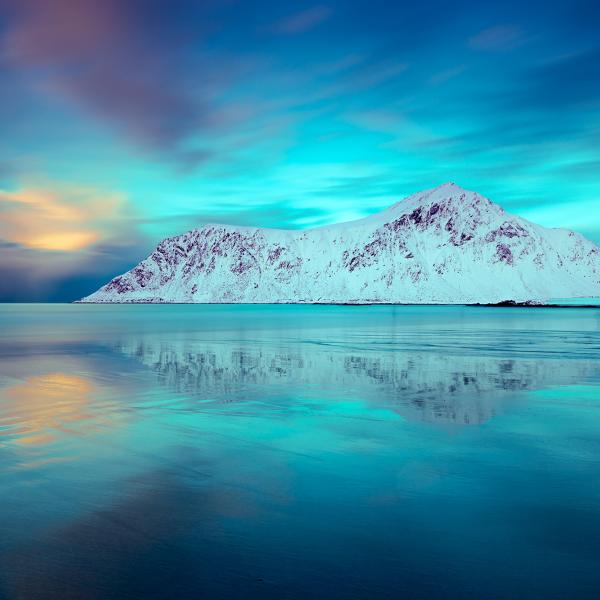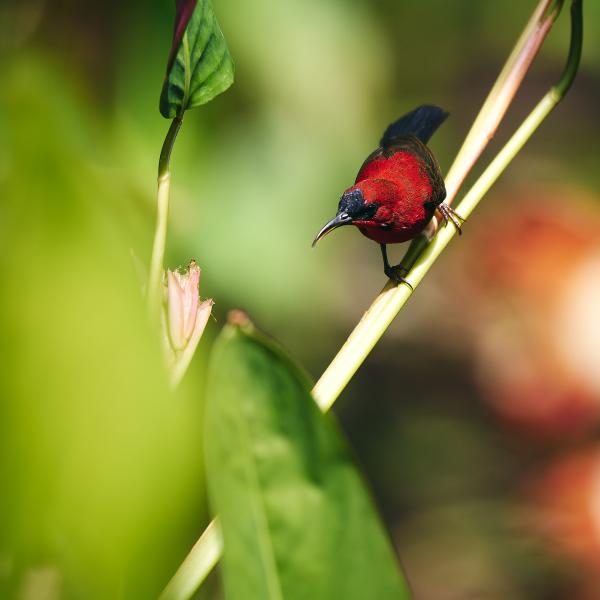FE 24-70mm F2.8 GM II | Excellent for outdoor photography | Review by James Liu
James is a photographer with a passion for the outdoors. He excels at capturing the shifts between light and shadow in mountainous areas, across the ocean, and with human subjects. He believes that photography and videography are the most powerful ways to record the beauty of nature and the variety of emotions a person can experiences on their travels.
Article Categories









Capturing the splendour of mountainous regions, through a lens
I love doing outdoor shoots, especially in mountainous areas. That's why a lightweight combination of camera and lens is an absolute must. My preferred camera is the Alpha 7 IV. For my lenses, I previously did a lot of shooting with the FE 55mm F1.8 ZA and FE 24mm F1.4 GM – switching between the two because each lens would perform better in specific situations.

However, I always wished I didn't have to keep swopping lenses for the best results. And after years of waiting, I finally got what I wished for when the arrival of the FE 24-70mm F2.8 GM II zoom lens!

Lighting determines the success of your outdoor shots. Choose well.
I make it a point to frequently check my camera's viewfinder and display to see whether the lighting and shadows are suitable for the shot I've planned. It's important to do so, because the image your camera captures is often different from what you see with the naked eye.
Personally, I prefer side lighting as it feels like a more natural light source. When you're outdoors, the sun is always your best choice for lighting, with clouds acting as natural diffusers. When shooting in sunlight, look for side lighting angles, so your shots will look more layered and three-dimensional.
One issue you'll run into here is the constantly shifting lighting, which can be perfect one moment and off the next. This can happen so quickly that the time taken for a lens swap, could cost you the shot!
For me, I like zoom lenses that can handle my most commonly used focal lengths – 24mm, 35mm, 50mm and 70mm. This is why, since I've picked up the FE 24-70mm F2.8 GM II, I've always brought it with me on outdoor shoots.
Previously, I would've said that fixed focus lenses provided better light transparency and colour performance than zoom lenses. But that's the case anymore. In fact, I dare say that the light transparency and colour performance of the FE 24-70mm F2.8 GM II zoom lens is entirely comparable to fixed focal lenses.
What's more, Sony's RAW file format is so adaptable, it's entirely possible to fix parts of the image that have bad backlighting. This is because details are preserved even in very dark conditions.
So, I'd recommend always choosing to preserve your RAW files in your camera settings. And if a halo in the highlights looks nice, you can even consider overexposing it – sometimes, you can get surprising results by breaking the rules of exposure! (Especially with Sony's powerful RAW file format.)
Capturing motion: Recording outdoor videos

When recording outdoors, it's a great idea to think from your audiences' perspective and try to immerse viewers in your scenes. Below, I share some recommendations on how to achieve this.

Whether I'm shooting people or landscapes, I like to practise using three angles (utilising different perspectives and focal lengths) and shoot at least three compositions for each project. There'll be an ideal focal length (or set of focal lengths) for every landscape you shoot – so be bold, experiment and see what works best! I think you'll be pleasantly surprised at the results you'll get from each focal length you try out.
- 24mm : Great for aerial scenes as you can capture everything in the environment, showcasing the entire scene. You can even create a time-lapse video with this view, showing the eye-opening changes in the environment across a passage of time.
- 35mm, 50mm: Ideal for shooting movement. Whenever I have the choice, I try to use a longer focal length, look for a farther composition, and look for ways to create more layers in the scene. Remember to pre-set your composition and note that in most films, there are usually only one or two wide-angle shots – so choose yours wisely.
- 70mm: Shooting at this focal length requires a lot of stability, so plan these shots in advance. This means conceptualising how the shot will be incorporated into the story you want to tell in your video, how the shot will be presented, and other details.
There's one more type of shot that's worth mentioning – slow motion. This is perfect for scenes that involve splashing, running, hair being blown in the wind, and more. When used tastefully, these can add texture to the film. Just be careful not to overdo this, as it may leave your storytelling and video direction feeling unfocused.

Closing thoughts on the FE 24-70mm F2.8 GM II zoom lens
Since having the FE 24-70mm F2.8 GM II in my collection, I've adopted a "one camera, one lens" philosophy for all my outdoor shoots. I'm very happy that I no longer need to tediously change lenses in outdoor environments, especially when time is of the essence.
Now, I can focus on the environment and subjects in front of me (instead of my equipment), and snap the perfect shots at the perfect moments. This feeling of freedom is something that every photographer wishes for, and I appreciate having it.










